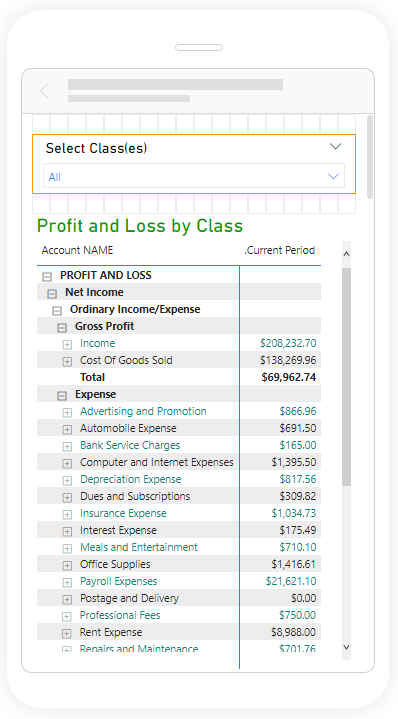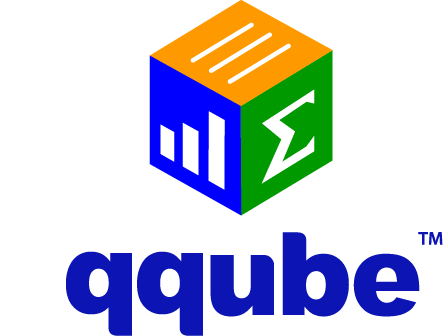
The QQube Data Warehouse connects to QuickBooks to extract relevant financial data and then transforms it into a complete data model containing fields that you can just drag and drop in the tool of your choice to create any type of custom QuickBooks 52-53 Tax Year Profit and Loss
Our QQube Configuration Tool contains options to control the type of 52/53 Tax Year structure you want, and also includes examples for Excel, PowerPivot, Power BI, Tableau, Crystal Reports, and Access some of which are displayed below.
There is no need to deal with tables, relationships, or data dictionaries.
Profit and Loss for 52-53 Tax Year
- Aggregated by Month for up to 40 Periods across 3 years
- Traditional Profit and Loss for IRS defined 52/53 Tax Year
- Compare Actuals and % of Sales
- Filter by Class or Side by Side
- Periods
- 4-4-5
- 4-5-4
- 5-4-4
- 13 x 4
Features
- 182 Pre-Calculated Measures
- DAX measures for Power/Pivot and Power BI
- Shortcuts e.g. Period # in Quarter or Year, etc.
Combine Multiple Company Files
QQube has Multi-Company Add-Ons to allow you to aggregate or filter your financial reports by class for any number of QuickBooks files.
Learn how to consolidate multiple QuickBooks Financial Statements
Rearrange Your Chart of Accounts
One of our QQube Certified Partners has developed a tool (AHA!) that allows you to re-map your accounts in ways that QuickBooks cannot.
Learn more about the ability to rearrange your QuickBooks Accounts
Compare to a Connector
An ODBC connector extracts and displays the raw text information available from the Intuit SDK, but this kind of functionality is not directly available in the SDK.
A raw connector would display individual table structures leaving you to reverse engineer results and calendar and profit and loss/account hierarchy functions that QQube has out-of-the-box.
QQube Schema Details
Custom QuickBooks 52-53 Tax Year Profit and Loss Example in Crystal Reports
Flexible Reporting Periods Following IRS Regs

Custom QuickBooks 52-53 Tax Year Profit and Loss by Class in Excel
Filter by Class or Side by Side
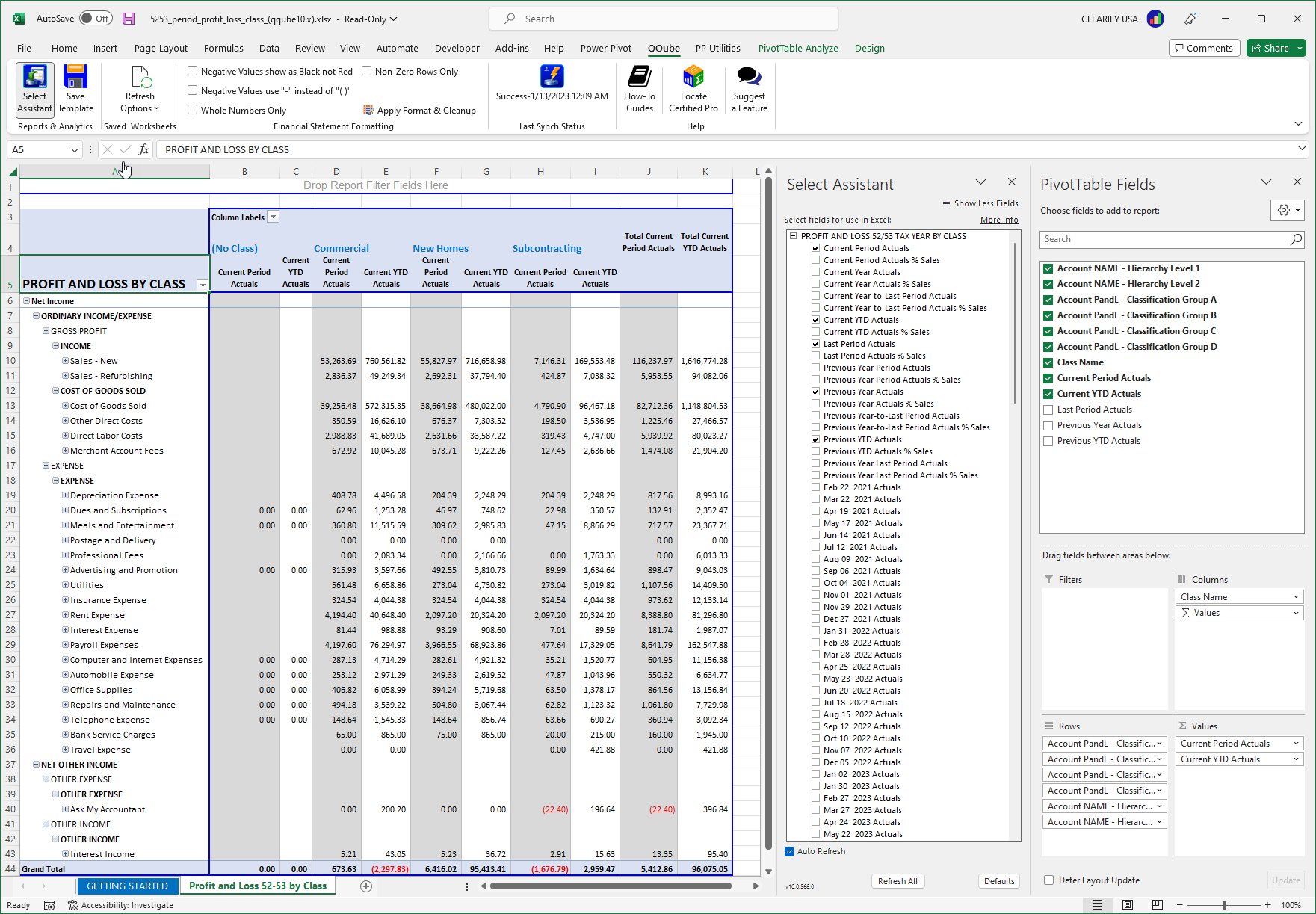
Custom QuickBooks 52-53 Tax Year Profit and Loss Visualization in Power BI
Graphical Comparison
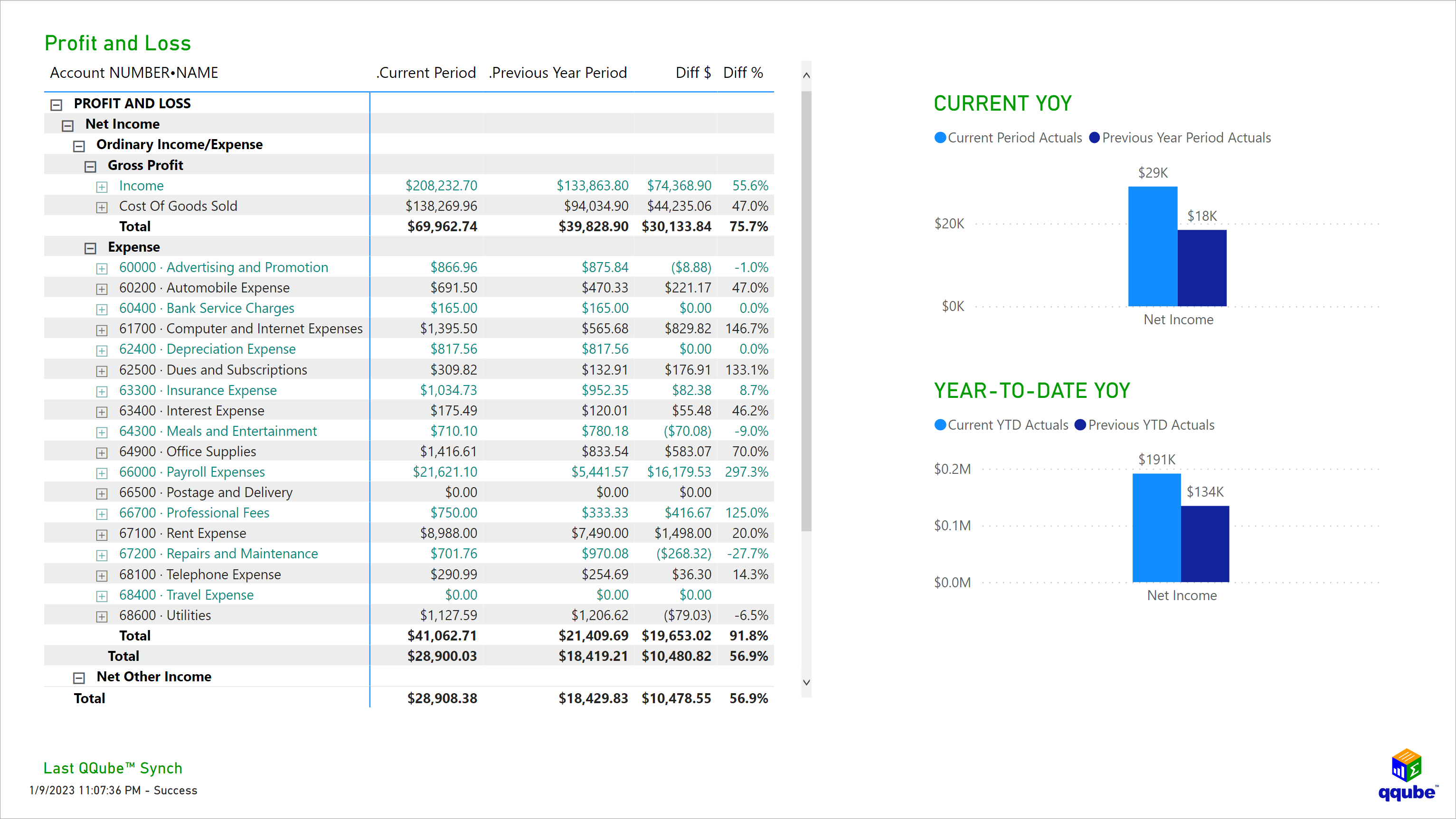
Custom QuickBooks 52-53 Tax Year Profit and Loss by Class Comparison in PowerPivot
Traditional Reporting with % of Sales
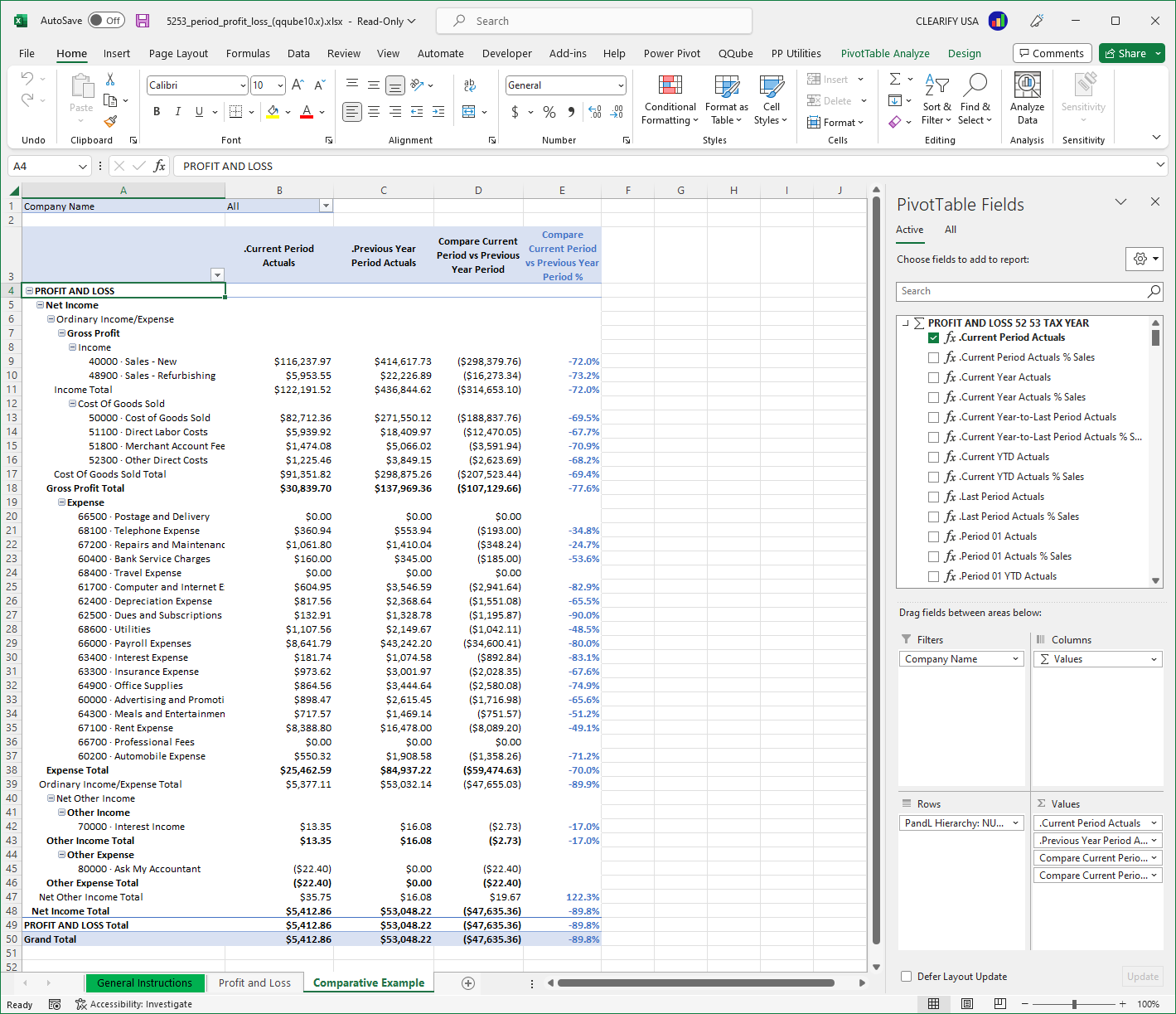
Custom QuickBooks 52-53 Tax Year Profit and Loss Mobile Example
Visualization on Mobile Phone using Power BI
